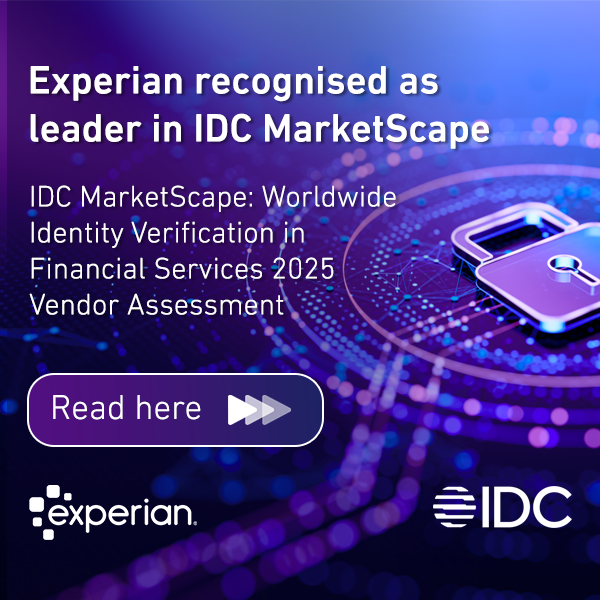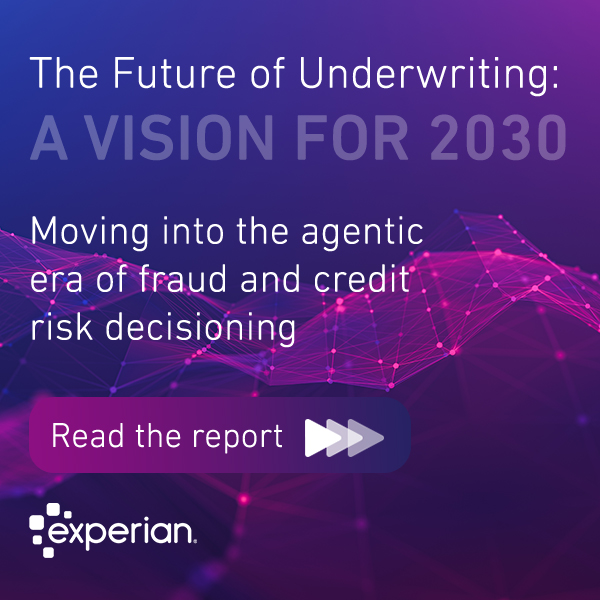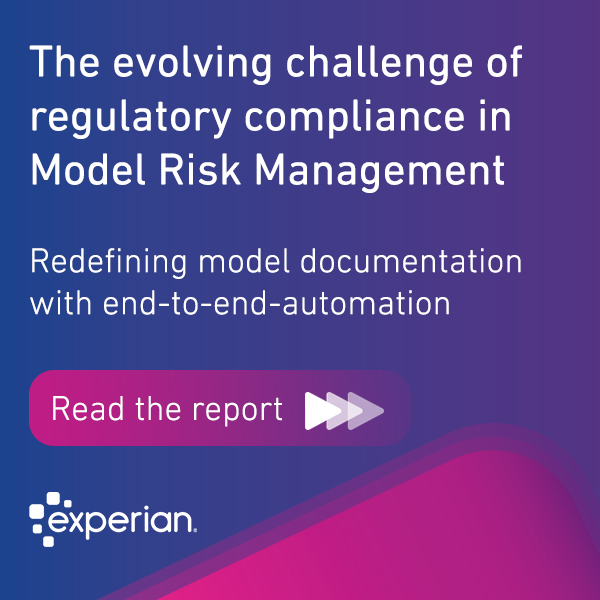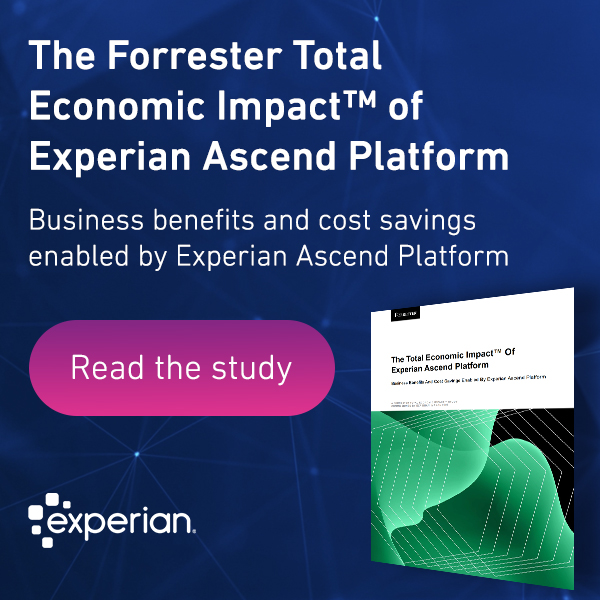Identity verification (IDV) is evolving from a gating function at onboarding into an adaptive capability that underwrites digital trust across every interaction.
In today’s digital world, identity has become the new battleground. Fraudsters are no longer just exploiting payments or accounts; they’re infiltrating identities by layering synthetic profiles, spoofing biometrics, and launching AI-driven deception. For organisations that depend on consumer trust, the question is no longer whether to double down on identity verification, but how to do so in a way that preserves customer experience, supports regulatory compliance, and scales effectively.
But how can organisations prepare for this complex set of challenges? To answer that, we examine what industry experts say is required in today’s environment.
Experian has been named as a Leader in the IDC MarketScape: Worldwide Identity Verification Financial Services 2025 Vendor Assessment (doc # US52985325, September 2025). The report evaluates vendors on the depth and breadth of their identity verification capabilities and on how effectively they align with current and future customer needs.
IDV must evolve from a gateway to a trust layer
For many years, IDV has been a hurdle to face at onboarding. Prove who you are, then proceed. But that paradigm is no longer fit for purpose:
Fraud is identity-first. Attacks now are focused on synthetic identity, identity layering, account takeover, and sophisticated imitation. 72% of US business leaders expect AI-generated fraud and deepfakes to be major challenges by 2026. Experian’s 2025 US ID & Fraud Report
User expectations and trust sensitivity are rising. Consumers abandon flows when verification feels arbitrary, opaque, or overly burdensome. 40% of US consumers and nearly 30% of UK consumers have considered abandoning a new account setup. Experian Global Fraud Snapshot 2025
Regulatory, audit, and governance pressures are intensifying. Digital ID trust frameworks, privacy regulations, and auditability demands mean that IDV must be auditable, explainable, and modular.
Identity is a living construct. People move, change, re-register, and identity data degrades over time, so fraudsters have the opportunity repurpose credentials. Static identity checks become stale – IDV must be woven into ongoing interactions, not just at the starting point.
Agentic AI is redefining trust. As humans are increasingly removed from decision loops, IDV frameworks must adapt to ensure integrity in autonomous interactions. New protocols will be needed to extend identity verification into the trust and authorisation requirements of the Human-to-Agent (H2A) environment.
IDV must no longer be a checkpoint but a core pillar on which other functions (fraud, KYC, onboarding, collections) lean.
How to support continual trust across the full lifecycle
- Layered, multi-modal signal orchestration
Document verification, biometrics, device intelligence, behavioural analytics, and external identity attributes are now baseline elements. What differentiates is how these signals are orchestrated: when to escalate, when to fallback, and how dynamically they interact in varying risk scenarios. Orchestration solutions must now extend beyond the technical integration of multiple services to incorporate an intelligence layer that interprets all signals to derive the best outcome for each event. - Risk-adaptive trust scoring
Binary checks (pass/fail) create either friction or exposure. Businesses need adaptive trust scores that allow for light touch for low-risk journeys and stronger verification for unusual or high-risk interactions. - Continuous monitoring & reverification
Identity is not static. Behaviour drifts, credential changes, and devices often alternate, all of which require ongoing scrutiny. Systems must detect anomalies and trigger re-verification where necessary, embedding verification into usage, recovery, and even offboarding stages. - Auditability, explainability & governance
Decisions in identity systems increasingly draw regulatory, audit, and compliance scrutiny. Transparency, decision explainability, and audit trails are vital. For enterprises, this means every verification result should be justifiable, traceable, and defensible. - Interoperability & trust networks
Siloed identity systems are declining. The future lies in credential attestation, federated identity, and interoperable trust networks. Readiness to support these trust frameworks through integration is key. - Resilience to AI-driven identity attacks
Generative AI and synthetic identity tactics stress-test traditional identity checks. To counter these threats, systems now require liveness detection, cross-signal consistency, anomaly detection, and defences against deepfakes.
New dynamics shaping identity verification
IDC MarketScape: Worldwide Identity Verification Financial Services 2025 Vendor Assessment (doc # US52985325, September 2025)
“Not only are solutions more intelligent, but the level of ease with which they can be implemented and flexibly adapted has improved. What was previously a drawn-out process of customization is now facilitated by low-code configuration, AI-backed recommendations, and modular plug-ins.”
The IDC MarketScape shares market insights
The IDC MarketScape: Worldwide Identity Verification Financial Services 2025 Vendor Assessment reflects the core concerns of organisations investing in identity, fraud, and onboarding capabilities. The study noted the following strengths for Experian:
- Access to a broad and diverse range of proprietary identity and credit data sources enables multi-layered verification across different financial services use cases.
- The platform incorporates risk-based authentication, progressive onboarding and behavioural analytics that enable fraud detection with reduced friction.
- NeuroID integration expands capabilities in behavioural monitoring, including detection of fraud rings and bot behaviour during digital onboarding.




